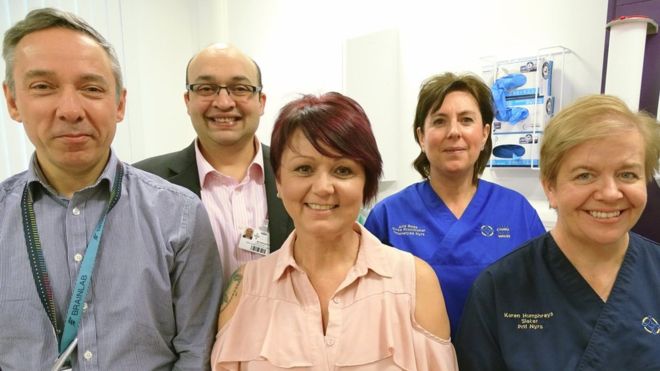We basked in the glow of even more large-scale 3D printing innovation in the Netherlands, admired yet another spectacular result from medical 3D printing applications, ogled some multi-material prints, and speculated on the dangers and opportunities of 3D printing cybersecurity, all this week in 3D printing.
#DutchPride, Part Deux
The Netherlands is really making this Dutch-born company feel all warm and fuzzy lately. First, the world’s first 3D printed cycling bridge opened in Gemert, and now, Amsterdam is on the verge of welcoming 3D printed floors and an even cooler 3D printed bridge to its historic environs. Yes, we’re bragging. Learn more at FastCoDesign and Slash Gear.
Beating Cancer, One 3D Print at a Time
Last week we encountered a 3D printed sternum. Now, the BBC brings us the story of a woman saved with a 3D printed titanium jawbone. The implant represents a vast improvement over the old take-some-fibula-and-make-it-work method. Heck, 3D printing has even improved that old-fashioned fibula jaw implant method by providing a 3D model of the patient’s jawbone that can be used to cut precisely fitting pieces of the fibula. These latest successes could mean a future where no bone is unrepairable.
Interested in 3D printing for your medical needs? We can help.

3D printed jaw implant recipient Debbie Hawkins and her medical team (image via ABM Health Board)
Multi-Material Magic
Silicone 3D printing has been a somewhat elusive goal, but German 3D printer company ACEO has reached it, and then some. As TCT reported, the company will debut multi-material silicone 3D printing at Form Next in Frankfurt next month. “Silicones of different colors, hardness or even chemical or physical properties can now be placed independent from each other at any given point throughout the process,” explained Dr. Bernd Pachaly, the project lead. This could have all kinds of applications in medical modeling, product development, and mass manufacturing of silicone 3D prints. And, it’s a big step toward printing multi-material machines and biomimicking models. That means we’re just a little bit closer to the “Star Trek replicator” dream.
A piece of multi-material 3D printed silicone (Photo: ACEO®; Wacker Chemie AG)
Threat…itunity!
What’s a threatitunity? I’m so glad you asked. It’s that combination of a clearly foreseeable challenge (threat) and the time needed to develop the tools to face it (opportunity). And that is what we have on our hands with 3D printing cybersecurity. As the Harvard Business Review discussed this week, hacks could lead to the physical instability of printed parts, which can pose incredible dangers, obviously, but also the kind of product recall nightmares that keep employees, CEOs, and shareholders up at night. If we can’t solve this, the era of mass manufacturing with 3D printing is threatened. Thankfully, as the technology develops, novel solutions are coming to light. Challenges + brains = innovations. And that’s a threatitunity.

